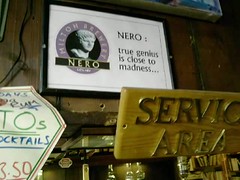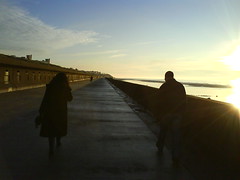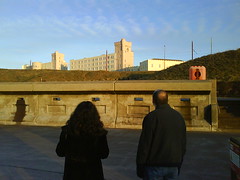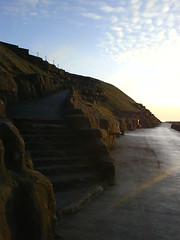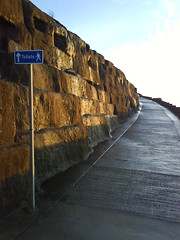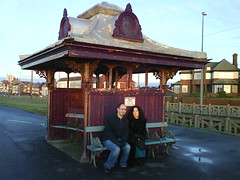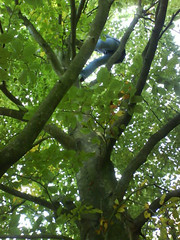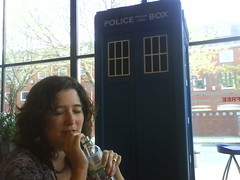First published in 1998, this is an oral history of repertory theatre - which is where the same group of actors star in play after play, usually on stage with one while rehearsing the next. The book is based on interviews with more than 200 actors, directors and stage managers, the youngest of them a 27 year-old David Tennant, here in the company of such luminaries as Lionel Jeffries and Phyllida Law, Harriet Walter and Derek Jacobi.
Names big and small share first-hand experience and also tales they were handed down. At times, this can get a bit repetitive — we get multiple stories about problems with on-set doors and actors having to make entrances or pass props through the fireplace. Quite often, the author summarises what a person is going to say before quoting them saying it. And I suspect that some of these stories have been embellished in the telling, either by the people quoted here or by whoever told them.
It’s not always clear when these stories took place, and I can’t believe that rep was the same in the 1930s and ‘50s and ‘80s. I found myself looking up the birthdates of the people spoken to so that I could put their accounts in chronological context (and work out which were contemporaries of David Whitaker, about whom more in mo…)
There’s also a surprising moment in the plate section, where one photograph from a production of Charley’s Aunt in Buxton in 1952 includes “Prudence Williams (the author’s mother), Gwynn Whitby (the author’s grandmother)” and “Nigel Arkwright (the author’s uncle)” — as well as a very young Nigel Hawthorne. I’d have liked more on this personal connection, the legacy of rep. The photo is followed by two more from productions of Charley’s Aunt, in Ipswich in 1984 and in Bexhill in 1960. Again, I’d have liked more on the choice of plays in rep, making sense of why some production played for just one week in one location and others ran and ran.
Even so, this is a treasure trove full of insight and detail. Bits of it are extraordinary. Derek Jacobi recounts having smallpox while in Birmingham (p. 190), considered serious enough that he didn’t have to go on stage, while others with gastric flu soldiered on (buckets kept handily just off-stage). Or there’s the reference to Anthony Oakley, who accidentally killed the actor he was duelling with in a production of Macbeth (p. 187).
Then there’s the sense of tradition, reaching back in time.
“Elizabeth Counsell … worked in a company with an elderly actor, who told her that as a boy he had been in a production of A Midsummer Night’s Dream playing one of the Mechanicals. During rehearsals an elderly actor in that company had given him the business associated with his character, which had been handed down over hundreds of years from Will Kempe, the actor who played the comic roles in Shakespeare’s own company.” (p. 70)
Nicely, this is then followed by Alan Ayckbourn being sceptical about this kind of claim — whether its really credible that such knowledge is passed down intact, and whether its useful anyway. That means we get Counsell’s awe-striking anecdote and also probe at it a bit, too.
A lot of it is very funny, such as the amazing image conjured by Brian Cox’s story about the day of his wedding to Caroline Burt in 1968. He was at Birmingham Rep at the time, appearing as Iago in Othello, alongside a blacked-up Michael Gambon in the title role. The reception was held in the morning and then the groom and other cast members were expected back on stage for their afternoon performance.
“I was the only one who was sober… I was sharing a dressing room with Mike. … He finally got all his clothes on [for the performance] and we were ready and ‘Beginners’ was called, then I looked at Mike and I realised he didn’t have any make-up on. And he was playing Othello! I said, ‘Mike, you haven’t got any make-up on,’ and he looked at his sticks of make-up and said, ‘That’s all right,’ and he gathered up the make-up and held the sticks under the lightbulb until they went soft and then rubbed them all over his face.” (p. 69)
Barbara Leslie married Shaun Sutton in 1948 while they were both in the cast of Jane Eyre — “I was playing Adele, aged eight, and Shaun was playing eighty” (p. 69) — and they held a party after the show, which then went on all night. Two weeks later, says Leslie, another colleague in the same company, Joan Sanderson, married Gregory Moseley and they held a party in the middle of the day, before taking to the stage for a performance of You Can’t Take It With You in which “half the cast were drunk”. One older actress was so incapable that a 17 year-old assistant stage manager (ASM) had to be quickly aged up by dousing her in talcum powder so she could take over.
Philip Voss recalls that “there was a lot of drinking in those days”, and in a production of Death of a Salesman at Colchester, a drunk ASM played the wrong sound effect cue at the dramatic climax — instead of a car crash, the audience heard wedding bells (p. 26).
Even without wedding-related shenanigans, there’s a constant feeling of chaos: missed lines, missed entrances and corpsing on stage, on top of all the privations. It’s sometimes difficult to keep track of the paltry rates of pay because the stories are grouped together by theme rather than chronologically, meaning that two actors citing their appallingly low salaries give wildly different figures.
But we get a vivid sense of the poverty from descriptions of changing rooms (sometimes just one room for all the actors, a curtain to divide the women from the men), accommodation and toilets. Friendly landladies would come into an actors’ room in the morning while they were still in bed to light the coal fire. Dirk Bogarde, we’re told, started his career as a “pot boy” at the Q Theatre in Hammersmith, sweeping the stage, washing up tea cups and cleaning toilets (p. 8).
In piecing together these stories, we get an evocative history of rep, full of textures and feeling. I was surprised to learn that rep isn’t some ancient tradition going back centuries but a particularly 20th century phenomenon. Dunn explains that the term “repertory theatre” was coined during the 1904-07 season at the Royal Court Theatre in London, where John Vedrenne and Hartley Granville-Barker “emphasised the importance of the play, rather than individual actors” (p. 2). The first repertory company was begun by Annie Horniman in 1908, at the Gaiety Theatre in Manchester. This book, published in 1998, sees rep as now passing from history — or perhaps even already gone.
There are lots of tidbits, too, on the mechanics of rep. It explains, for example, the role of rep in getting past the Catch-22 situation facing new actors: you could only get a professional job if you had an Equity card, but could only get an Equity card if you had a professional job.
“Every repertory company was allowed to give out two cards a year and the competition for them was understandably fierce.” (p. 7)
I knew that actors in rep had to provide their own costumes and make-up but didn’t realise there were set terms. Dunn quotes from the Standard Esher Contract:
“All character and special costumes and wigs shall be provided by the Manager. No Artist shall be required to provide any costume that could not ordinarily be used by him in his private capacity. A male Artist receiving a weekly salary of £8 or less shall not be required to provide more than two ordinary walking suits and one evening suit.” (p. 130)
A dress call held after morning rehearsal on Friday allowed everyone to see what each other was wearing for the new play opening on Monday, with adjustments then made if actors clashed with one another or the set (p. 131). Most actresses took sewing machines with them (p. 132). But a wide range of skills were expected.
The entry-level job was as assistant stage manager, or acting/ASM, where novice actors got small roles on stage but also did anything else needing doing. The idea was that they’d get a broad education on the workings of theatre — the lights in the “flies”, the logistics of building and dressing a set, and all the unexpected, weird stuff. Liza Goddard learned to reupholster sofas and chairs — “I can still do that” (p. 29). ASMs had to find furniture, decor and ornamentation for the sets, often by going begging round the local shops and houses (p. 28); they also had to provide (and cook) any food eaten on stage (p. 29).
Then there were the sound effects to be played in live. Alec McCowen recalls traditional means, such as peas on a drum to convey rain, and electrical sticks for lightning (p. 26). Phyllida Law was put in charge of a panotrope gramophone and accompanying 78 rpm records.
“I marked these records, would you believe it, with tailor’s chalk, so I knew where to put the needle on to start the supposedly atmospheric music.” (p. 25)
(Not mentioned, but something I’ve been looking at in my wider research, is the records especially pressed for stage productions, with whatever sound effects an individual play required. The Bishop Sound Company, later Bishop Sound & Electrical Company, in London was a pioneer of this — and the
British Library holds a collection of Bishop Sound recordings. The same kind of technology was employed on old television, such as in the early years years of
Doctor Who, with “grams” played in live to the studio.)
For one production in Oldham, ASM Bernard Cribbins had to source a goat to appear on stage, which he’d bring in each day on the bus.
“The driver used to make me go upstairs [with it]. I’d ask for one and a goat to Rose Bank, which was near the theatre.” (p. 31)
Cribbins also says that he didn’t get days off, as he was required to help on Sundays with striking the set of one production and putting up the next one (p. 32). He doesn’t have quite the nostalgic wistfulness of his contemporaries: “they weren’t good old days when you think about it, it was bloody hard work.” (pp. 33-34)
For all the hard graft, the toil and sweat, there’s a vivid sense here of the formality of this bygone age: Jennie Goossens says leading men in a company were always addressed by their surname (p. 57). There’s the respectability, too. At Colchester, according to Philip Voss, producer “Bob Digby insisted that we behave well. We weren’t allowed to hold hands in the street” (p. 57).
I’d already read something of the sort in a biography of Yootha Joyce:
“Whatever their background, Harry Hanson was known to pressure his actors to always appear glamorous, on and off stage. This filtered through to the other associated Harry Hanson companies.” (Paul Curran, Dear Yootha... (2014), p. 28)
That was reflected in the kind of material Hanson’s companies staged. Margery Mason, who worked with Hanson for 10 years, recalled his,
Harry Hanson (1895-1972) founded his first Court Players repertory company in Hastings in 1932, and soon had companies all over the UK, from Sheffield to Penge. In Exit Through the Fireplace, Peggy Mount — who was 13 years older than Whitaker — says she also started out as an ASM in “Leeds, which was Harry Hanson’s top company” (p. 189), suggesting that when Whitaker moved from ASM at Bradford to juvenile lead at Leeds, it was a significant step up.
[Above: "A definite step up the ladder" — profile of David Whitaker from an unknown newspaper with no date, though his last known performance at Bradford was on 8 March 1952 and he was at Leeds by 21 April; he turned 24 on 18 April that year.]
Mount says that Harry Hanson, “was a little, short, fat man and he had three wigs”, and actors learned to be on their guard if it was the blond one, as it meant Hanson was in a bad mood (p. 55). Others testify to Hanson’s temper; Paul Daneman calls him “a bit of an ogre and he had a stranglehold on rep” while Beryl Cooke says he’d sack actors who weren’t “DLP” or dead letter perfect (p. 54).
But Vilma Hollingberry says Hanson was “a marvellous man”, with a “waspish sense of humour and he cared tremendously about the standard of work” (p. 54). She reports, too, that her time with a Hanson company involved two performances a night of the same play, but the afternoon one would be shorter, with cuts made to allow the actors to take a longer tea break between shows. In the second performance, all the cut bits would be reinserted (p. 191). Given the punishing schedule and pressures of weekly rep anyway, this seems something like magic, or something bound to fail. It wouldn’t have helped dispel the air of chaos backstage.
Carmen Silvera also speaks of Hanson’s eye for detail:
“One was that flowers on stage must be right for the season in which the play was set and that every night they must be wrapped up in tissue paper and put in their boxes. All the lampshades that were used on set had to be covered in tissue paper every night, so that when we rehearsed on stage in the morning no dust would get on them and they would not be dirtied. Everything was protected so that his sets always looked good.” (p. 129)
One last intriguing thing. There’s a story from one “MC Hart” (p. 12), who we’re told “started his career with Butlin’s rep and went on to become a television director; among his credits are
Waugh on Crime” (p. 260). But the latter seems to refer to a
six-episode run of episodes of Thirty-Minute Theatre from 1970-71, half of them directed by
Tristan de Vere Cole and the other half by Philip Dudley. Could this be Michael Hart, the director of 1969
Doctor Who story
The Space Pirates and of episodes of
Sir Arthur Conan-Doyle, and brother of Tony?





















